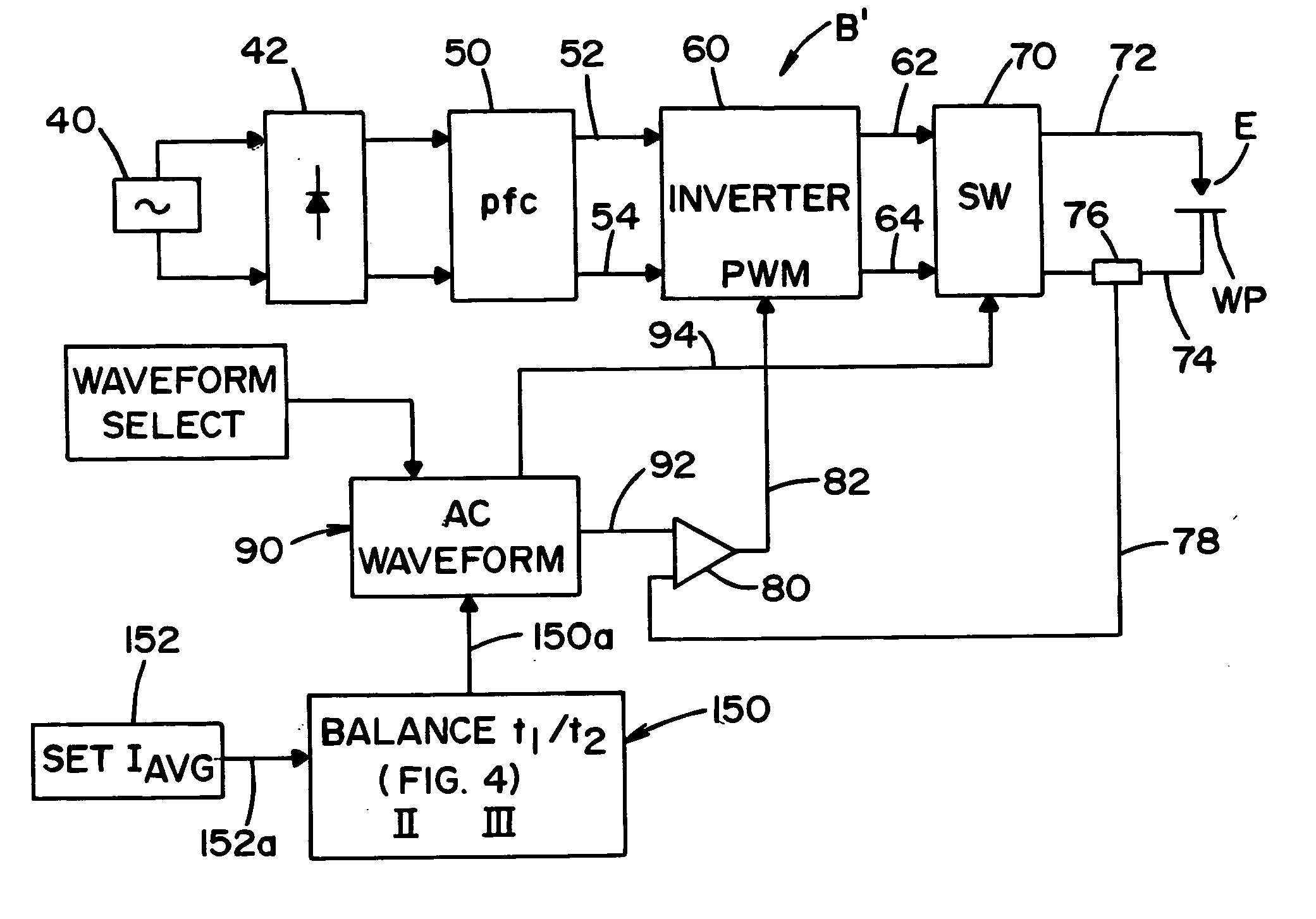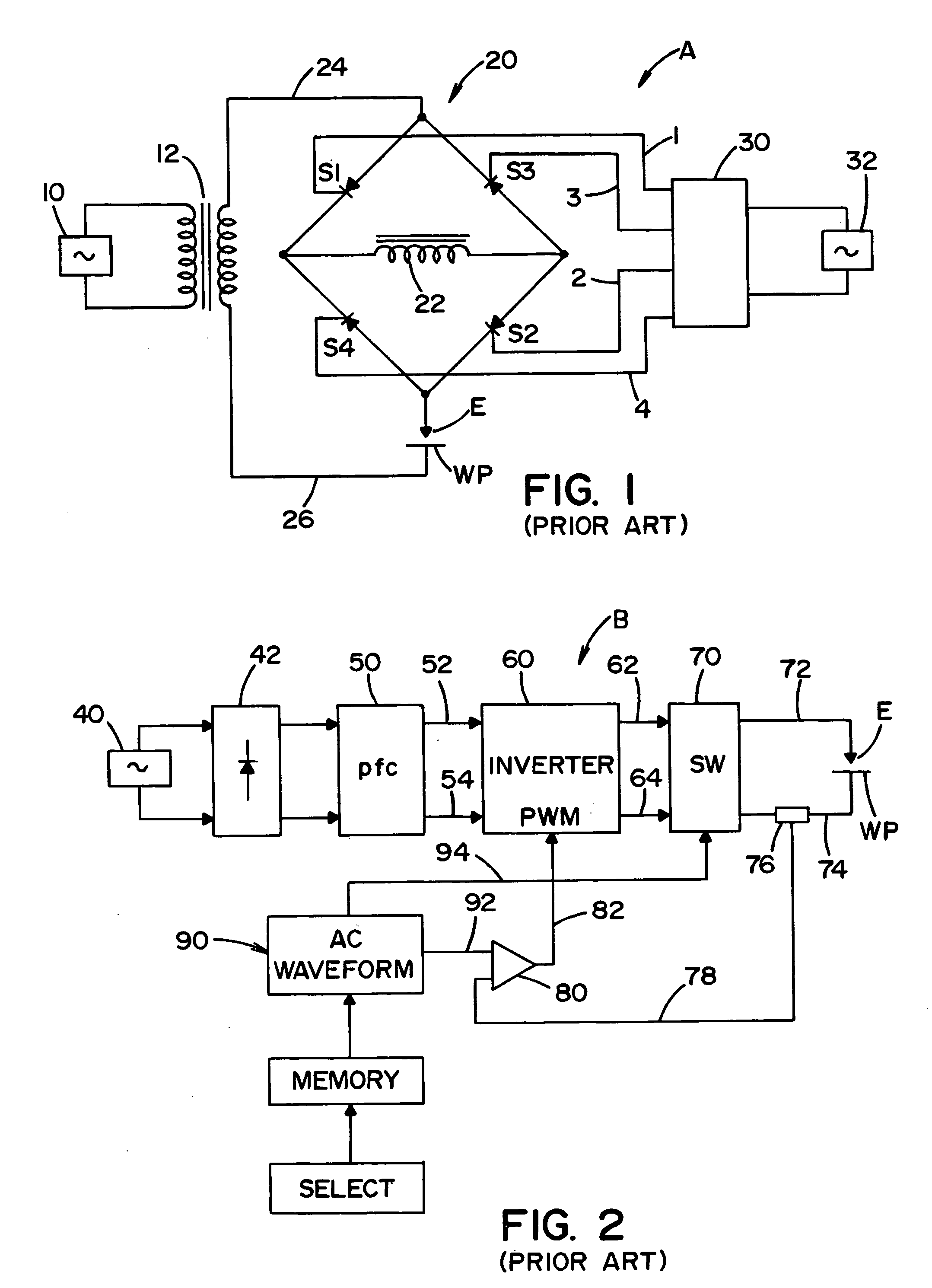Synergic TIG welding system
a welding system and synergistic technology, applied in welding equipment, arc welding equipment, manufacturing tools, etc., can solve the problems of limited positive half cycle current, less acceptable arc column focus in view of unacceptable noise level, and limited environmental noise level to prevent electrode spitting. , to achieve the effect of reducing noise, increasing waveform frequency, and wide control rang
- Summary
- Abstract
- Description
- Claims
- Application Information
AI Technical Summary
Benefits of technology
Problems solved by technology
Method used
Image
Examples
Embodiment Construction
[0032] AC TIG welding includes a positive half cycle and a negative half cycle referred to as the positive current section and the negative current section. Such welding is performed with a minimum current generally in the range of 5.0 amperes to an extremely high current in the neighborhood of 300-500 amperes. The positive half cycle is used for cleaning and the negative half cycle is used for welding or penetration and transfers heat to the workpiece. Different relationships of current and duration for the cleaning cycle and the penetration cycle are desirable for different set welding currents. AC TIG welders, for years, have been powered with a transformer based power source using SCRs as shown in FIG. 1. This type device is described in Stava U.S. Pat. No. 4,861,965; however, it is difficult to optimize the positive half cycle and the negative half cycle at different set current levels. Many functional constraints of the prior art welder shown in FIG. 1 have been overcome by an...
PUM
| Property | Measurement | Unit |
|---|---|---|
| constant positive peak current | aaaaa | aaaaa |
| frequency | aaaaa | aaaaa |
| current | aaaaa | aaaaa |
Abstract
Description
Claims
Application Information
 Login to View More
Login to View More - R&D
- Intellectual Property
- Life Sciences
- Materials
- Tech Scout
- Unparalleled Data Quality
- Higher Quality Content
- 60% Fewer Hallucinations
Browse by: Latest US Patents, China's latest patents, Technical Efficacy Thesaurus, Application Domain, Technology Topic, Popular Technical Reports.
© 2025 PatSnap. All rights reserved.Legal|Privacy policy|Modern Slavery Act Transparency Statement|Sitemap|About US| Contact US: help@patsnap.com



